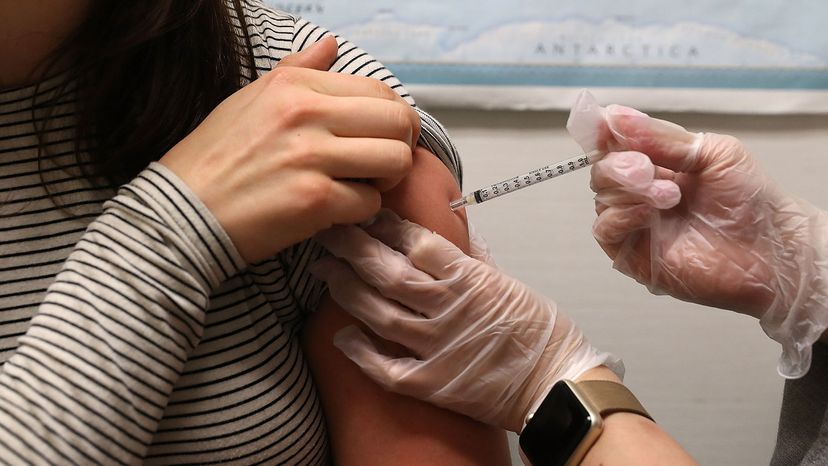
Your annual flu shot protects you from some types of flu, usually the ones that got people sick the year before. But if a new strain of flu shows up, the shot may not work for it. That's why a holy grail of medicine is to create a universal flu vaccine.
A universal flu vaccine can't come soon enough, especially for particularly vulnerable populations, such as children, the elderly and the immune-compromised. More than 650,000 people around the world die of seasonal influenza every year, according to the World Health Organization. Seasonal flu also costs the U.S. healthcare system and society in general, a pretty penny, about $11.2 billion in 2018.
Advertisement
And those figures don't include the people who have contracted coronavirus, a disease with similar symptoms to influenza, which is caused by a different type of virus from the several strains of influenza virus. As of March 12, there were 125,048 cases confirmed and 4,613 deaths from coronavirus, according to the World Health Organization. Several companies are racing to develop a coronavirus vaccine.
So why is it so hard to develop a vaccine for flu, if the threat and impact are so great? It has to do with the fact that influenza is incredibly cunning. "You can hardly imagine a more promiscuous virus," says Dr. Greg Poland, spokesperson for the Infectious Diseases Society of America (IDSA) and professor of medicine and infectious diseases at the Mayo Clinic in Rochester, Minnesota, noting that trillions of new strains can develop in mere minutes. "Fortunately 99.999 percent don't have genetic fitness, they can't survive."
However, those that remain can pack a pretty serious punch. The survivors either experience antigenic shift or antigenic drift. Those that undergo antigenic shift morph into novel strains that can turn into pandemic-level flu, such as H1N1 and avian influenza. This hardly ever happens, with four influenza pandemics in the last 100 years, according to the Centers for Disease Control and Prevention (CDC).
By comparison, antigenic drift happens all the time with influenza, resulting in many small virus changes, which makes it tricky for vaccine developers to nail even the annual flu virus squarely on the head. "So, what happens is about a quarter of a million viruses are isolated every year and sequenced to give us an idea of what is circulating," Poland says. "It takes six months or so to develop and distribute the flu vaccine. By that time many of the strains have drifted to the point where they have next to no protection."
It's worth noting here that even a mis-matched vaccine is known to reduce the severity of symptoms and length of overall illness, so it's still important to get the vaccine annually. Better to be bed-ridden for three days than seven, or worse, end up in the hospital!
Indeed, there are multiple roadblocks to developing a universal influenza vaccine, but a number of biotech companies and academics are currently working to overcome them. "The whole idea is to develop broadly neutralizing antibodies," Poland says, noting that these antibodies would ideally protect against every influenza strain.
Advertisement
